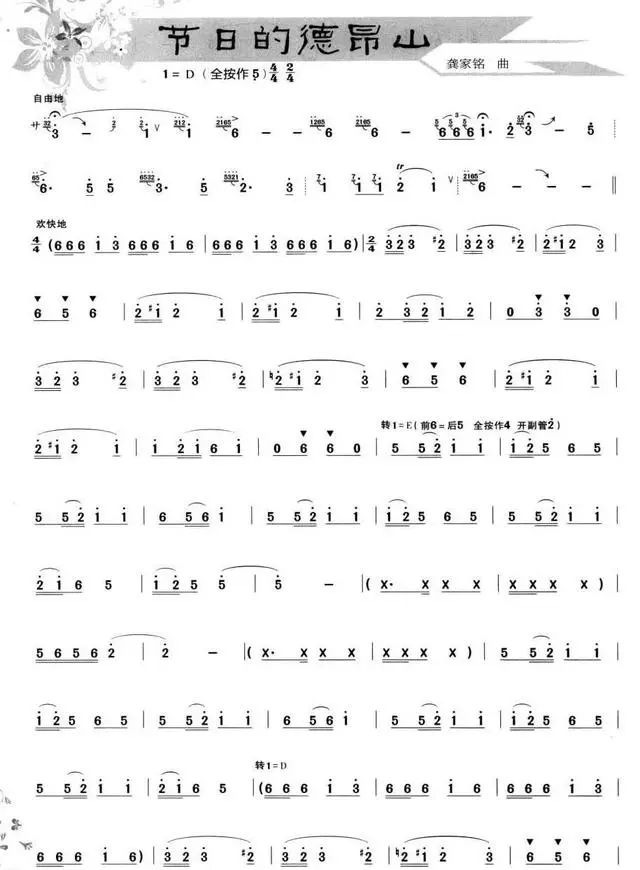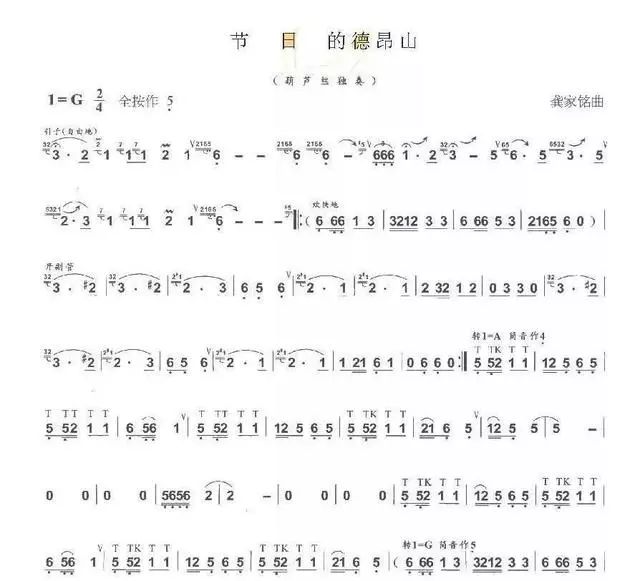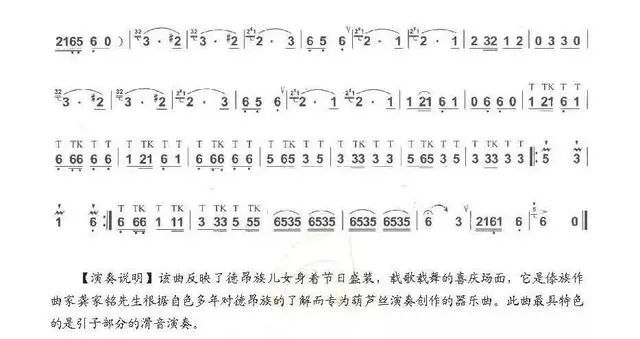Explanation of the performance of the cucurbit flute "D'Angsan at the Festival"
The festival's De'ang Mountain is a solo piece with a strong De'ang music style. Especially the introduction is played with the technique of glissando, and the use of changing tones is the most unique style of this piece. From the score, this single is a simple solo piece, but after listening to it, you won't be like this.
1. The performance of the introductory part
This piece is the most alluring, with the most national characteristics, and the best way to reflect the charm of the cucurbit flute is the introduction. Let’s talk about the performance of the glissando first. As the name implies, the transition between the two tones becomes slow. Ordinary portamento can also be erased, which makes the transition between two sentences round, beautiful and smooth, while long portamento makes the transition between the two blurred. The sound of people crying, how is the portamento played? No matter the slide up or down, the finger movement speed is the slowest in the ordinary portamento technique, and the portamento appears naturally, you can try it.
In the introduction, all those who require long portamento are marked with portamento, especially reminding everyone to control the ring finger well in the bass, cooperate well in the breath, the strength of the breath should gradually increase with the decline of the sound, and finally stop the breath strength at a Make sure the sound is clean and powerful.
2. The performance of the middle board
In the performance of the middle board, there is a major second degree transition, and the fingering is also changed from the drum sound to 5 and the drum sound to 4. Let's look at the 5 part of the drum sound first. Please note that the two changing sounds #1 and #2 are basically the same. The music style of this section is determined. The two changing tones are played with the half-hole method, that is, when playing #1, the fourth hole is opened halfway on the basis of the 1-note fingering, and when playing #2, the 2-note fingering is played. On the basis, the fifth hole is opened by half, especially the #1 sound is in the position of the polyphonic appoggiatto, and the duration is very short, so playing #1 increases the difficulty and requires more practice.
Pay attention to three aspects in this part of modulation. First, you need to be proficient in the fingering of the tuner 4. You may feel that your fingers are not very flexible when you play it, so you need to practice more. On the other hand, you need to control the strength of the breath. Strong dance, so the contrast between strong and weak is strong. The third aspect is the use of the tongue, mainly the combined use of three accents and single accents.
The last part, the section from the beginning of the last 17 bars to the last 5 bars, is played with three vomits and single vomits. It is not difficult to refer to the diacritical marks on the score for this section. It should be noted that the 6 of the penultimate measure slides to 3, which is also played with a long slide, a long slide from 6 to 3. The method is to gradually close the 6th and 7th holes at the same time with the index finger and thumb.
Hulusi Solo Music [Festival De'Angsan] Sheet Music


Bau Solo Music [Festival De'angshan] Sheet music


 渝公网安备 50010702504639号
渝公网安备 50010702504639号